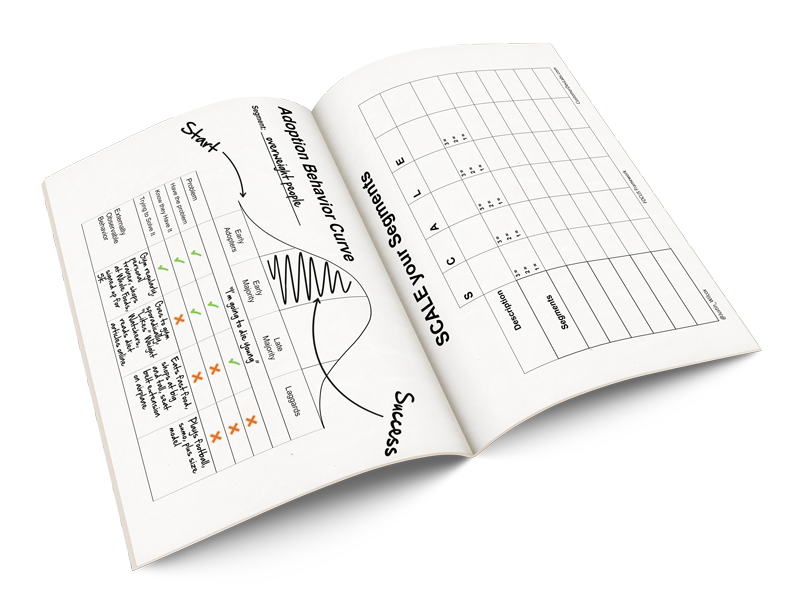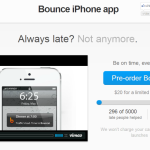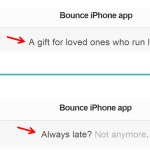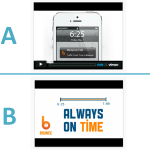How we got a dozen launch-day write ups with a little JavaScript, Mechanical Turk, and the Google News API. Code included.
That said, lets hack some press…
Getting press is daunting for just about every founder. Who do you talk to? How do you find them? What do you pitch them? All questions I spend hours thinking about…for…every…project.
But with a little creativity, and a little hacking, getting press is easier than I thought. Easy enough to get a recent product covered by…
Background
Some friends and I were launching ThingsWeStart, a “Crowdfunding Aggregator” – imagine all of the projects on Kickstarter, Indiegogo, etc. displayed on a map, so you could support projects near you.

Something this badass deserved a press push…
Step #1 – Find the Right Reporters
The first step was to find reporters who might cover us. That started with a Google News search for “Kickstarter”.
This is a very different approach than listing all possible news outlets and submitting tips to them. Instead I was personally targeting individual reporters, who already demonstrated interest in our subject matter.
Want to follow along? Search Google News for articles related to your company’s value proposition.
Step #2 – Download their Articles
Now I had some articles, but what I really needed was the reporters’ contact info. Instead of searching through each story on my own, which would take forever, I wanted to created a spreadsheet of them so I could farm out the work.
Luckily, Google News has an API which makes that relatively easy – but there’s no sense in you reinventing the wheel. Please, use my code:

Step #3 – Collect their Contact Info
With the list of articles in hand, I wanted to collect the names and email addresses of each reporter – so I could personally tell them about our launch.
Thing is, I didn’t want to do that work myself – it’s boring. Instead, I asked the good folks on Mechanical Turk (mTurk) to do it for me…for $.03 per email address! If you’re not familiar with mTurk, I can’t recommend it enough.
To get started, I created a HIT template:

Then I uploaded a CSV (the spreadsheet you downloaded in Step #2) to mTurk:

…and mTurk automatically combined the two to create a HIT for each article in the CSV:

Rather than investing two weeks digging for contact info for 700 articles, dozens of people delivered me results within a couple days.
Important: I suggest you turn off requiring Master Turkers. You’ll have to babysit the results, and block Turkers who aren’t giving you valid results, but you’ll likely find more people willing to help.
Following along? Create a new HIT on mTurk and use this HTML as the basis for your template.
Step #4 – Progress Monitoring
When I did this, I saw a large number of HITs completed within the first few days. After that, results started to drop off. I think my HITs eventually got pushed to the bottom of the stack.
To counter that, every couple days I would cancel my incomplete HITs, and relaunch any articles I didn’t have contact information for.
Within a week, I had contact information for 350 reporters who had written articles about Kickstarter.
Step #5 – Build a Press Kit
The most important rule I’ve found when working with reporters is:
These poor folks are under crazy deadlines, have to produce multiple stories per day, and are inundated with requests for coverage. The more we can help them out by writing our story for them, the better off we’ll both be. Win-win.
Here’s the press kit we prepared for our launch. It includes:
- Description of the problem we solve
- Screenshots
- Beautiful Infographics by Stephanie Haller (be sure to include some kind of image)
- Bio of the team
- Why we’re doing this
- Why we’re different than existing solutions
Step #6 – Prime the Pump
With contact information in hand, and a killer press kit, it was time to reach out to the reporters. 5 days before launch, I gave them a heads up we were coming, but no access to our press kit:
A couple days later, I gave them access to our full press kit, but told them not to write about us until launch day:
On launch day, I told them to have at it:
Important: embargoes are essential.
It’s important to tell reporters that your content is “embargoed” until you officially launch, which means they’re not allowed to write about you until your launch date. If you don’t mention this, one of these folks is going to jump the gun and publish your story early. That in turn, will make other reporters less interested in covering you, since it’ll be old news by then.

Some news outlets/reporters hate embargoes. If you really want their press, only tell them about your launch the day before you go live.
Step #7 – Watch the Ink Roll In!
Once we launched we simply setup some Google Alerts and Twitter searches, and watched the press roll in.
Hack Metrics
- Hours spent: 40 (includes time coming up with the hack, writing the code, etc. Should take you less.)
- Money spent: 350 email addresses x $0.03/address = $10.50
- PR pros hired: 0
- Total write-ups: 13
- Traffic generated: ??? Remember when GoDaddy’s DNS service went down? That was the day we launched :)
Following along? I’d love to hear if you’ve tried this, or other press hacks!
Final Tips:
- Play around with pricing. If you’re in a hurry, you’ll probably want to pay more than $.03/article
- Block turkers who submit obviously fraudulent contact info (you won’t have to pay for those)
- I’m stoked, quite a few people are finding this article useful! Unfortunately, that means there probably lots of HITs on MTurk right now trying to get contact info for journalists. That means, you may need to either pay more, or wait a little while before trying it yourself.
TL; DR
The Google News API and Mechanical Turk can be combined to get lots of press for your launch.
What’s Next?
Subscribe via Email or RSS for more hacks and in-depth discussions on getting press, validating marketing channels, and reaching your customers.
First time to Customer Development Labs?
Check out our most popular experiments:
- Interviewing 100 customers in 4 hours with MTurk
- You’ve interviewed customers. Now what?
- Lean Recruiting: Testing a 2-sided market

































